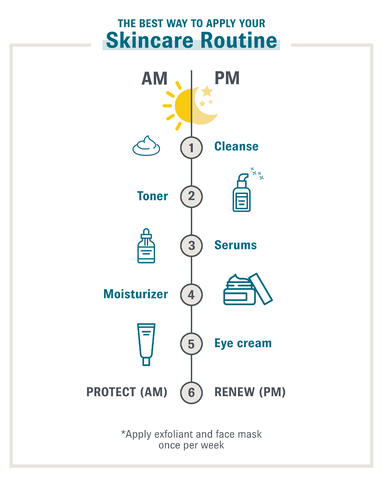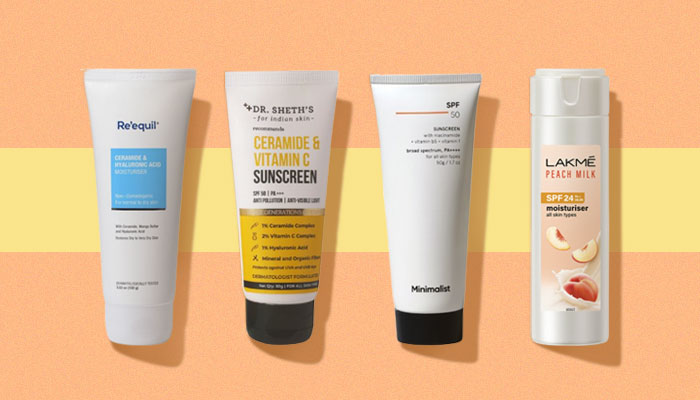Moisturiser Or Sunscreen First

Apply moisturizer before sunscreen to ensure proper hydration and then effective sun protection. Choosing the correct order for applying skincare products can significantly impact their efficacy.
Moisturiser Or Sunscreen First whether you are following a skincare routine in the morning or prepping your skin before heading out into the sun, knowing whether to apply moisturizer or sunscreen first is essential. By understanding the optimal order of application, you can maximize the benefits of both products and achieve healthy, radiant skin.
Let’s delve deeper into the reasons behind the preferred sequence and the benefits it offers to your skin.
Introduction To Skin Care Essentials
When it comes to maintaining healthy and radiant skin, it’s essential to understand the significance of using the right skincare products in the correct order. Two fundamental components of a skincare routine are moisturisers and sunscreen. This blog post will delve into the roles of moisturisers and the importance of sunscreen protection, guiding you on the optimal application sequence for these skin care essentials.
The Role Of Moisturisers
Moisturisers play a vital role in maintaining the skin’s hydration and barrier function. They help to prevent water loss and keep the skin supple and smooth. Additionally, moisturisers can seal in moisture and provide a protective layer to shield the skin from environmental stressors. By promoting skin hydration, moisturisers contribute to a healthy and youthful complexion.
Importance Of Sunscreen Protection
Sunscreen protection is crucial for shielding the skin from harmful UV rays, which can cause sunburn, premature aging, and an increased risk of skin cancer. Applying sunscreen daily helps to prevent sun damage and maintain skin health. It’s a proactive measure to safeguard the skin from the adverse effects of UV radiation, making it an indispensable component of any skincare regimen.

The Science Behind Moisturising
Discover the optimal skincare routine by considering whether to apply moisturizer or sunscreen first. Layering sunscreen over moisturizer helps lock in hydration and ensures maximum sun protection. This simple tweak in your regimen can enhance the effectiveness of both products for healthier, glowing skin.
How Moisturisers Work
Moisturisers help to keep the skin hydrated by locking in moisture and preventing it from evaporating into the air. They contain a combination of ingredients that work together to achieve this. Humectants such as glycerin and hyaluronic acid attract water to the skin, while emollients like shea butter and jojoba oil soften and smooth the skin. Occlusives like petrolatum and dimethicone create a barrier that prevents moisture loss from the skin’s surface.
Benefits For Different Skin Types
Moisturisers offer a range of benefits for different skin types. For dry skin, a heavy cream or ointment can provide intense hydration and help to repair the skin’s barrier. For oily skin, a lightweight lotion or gel can provide hydration without adding excess oil. Combination skin types can benefit from using different moisturisers on different parts of the face, such as a heavier cream on the dry areas and a lighter lotion on the oily areas.
Moisturiser Or Sunscreen First?
While it may seem like a simple question, the answer is actually a bit more complicated. The general rule of thumb is to apply moisturiser first, followed by sunscreen. This ensures that the moisturiser has a chance to fully absorb into the skin before the sunscreen is applied. However, if you are using a chemical sunscreen, it should be applied first, as it needs to be absorbed into the skin to be effective. If you are using a physical sunscreen, it can be applied after moisturiser.
Sunscreen: Your Skin’s Shield
When it comes to protecting your skin, sunscreen plays a vital role as your skin’s shield against harmful UV radiation. Understanding the importance of sunscreen application and its proper use can help prevent skin damage and premature aging.
Uv Radiation And Skin Damage
UV radiation from the sun can cause various forms of skin damage, including sunburn, premature aging, and even skin cancer. Applying sunscreen helps to block these harmful rays and reduce the risk of skin damage.
Spectrum Of Sunscreen Protection
Sunscreens provide a spectrum of protection against UV radiation. They are categorized into broad-spectrum and high SPF formulations to ensure comprehensive coverage against both UVA and UVB rays. Choosing the right sunscreen based on your skin type and sun exposure can maximize its protective benefits.

Layering Your Skin Care Products
Layering your skin care products correctly is essential to maximize their efficacy and ensure they provide the intended benefits. Whether you are applying moisturizer or sunscreen, understanding the correct order and potential interactions between ingredients is crucial for maintaining healthy and radiant skin.
The Correct Order Explained
When it comes to layering skin care products, the sequence in which you apply them is key. Moisturizer should be applied before sunscreen to ensure that your skin receives adequate hydration and nourishment before being shielded from the sun’s harmful rays. This order ensures that the sunscreen forms a protective barrier over the moisturizer, allowing both products to function optimally.
Interactions Between Skin Care Ingredients
Interactions between skin care ingredients can impact their effectiveness. Certain ingredients in moisturizers may dilute or destabilize the protective components of sunscreen, potentially reducing its ability to shield your skin from UV radiation. Therefore, it is important to be mindful of the formulations and compositions of both products to avoid any potential negative interactions.
Application Techniques For Maximum Benefit
Proper application of moisturizer and sunscreen is essential for effective skincare. Here are some expert tips to ensure you get the maximum benefit from these products.
Applying Moisturiser Correctly
When applying moisturizer, it’s crucial to start with clean hands and a clean face. Take a small amount of moisturizer and gently massage it into your skin using upward motions. This helps to promote circulation and absorption. Focus on areas prone to dryness, such as the cheeks and forehead, and don’t forget the neck and décolletage.
Sunscreen Application Tips
For sunscreen, it’s important to apply a generous amount to all exposed skin. Use a broad-spectrum sunscreen with an SPF of at least 30. Apply the sunscreen 15 minutes before going outside and reapply every two hours, or more frequently if swimming or sweating. Ensure that you cover often overlooked areas like the ears, back of the neck, and tops of the feet.
Common Myths And Misconceptions
Myth Busting: Moisturiser Vs. Sunscreen
One common myth is that you should apply moisturiser before sunscreen. However, this can dilute the effectiveness of sunscreen.
Another myth is that a moisturiser with SPF can replace sunscreen. The truth is, dedicated sunscreen offers better protection.
The Truth About Spf And Moisturisation
Many believe that a higher SPF in moisturiser means better sun protection. In reality, sunscreen should be used for optimal SPF coverage.
Sunscreen should be applied as the final step in your skincare routine to ensure maximum protection from harmful UV rays.
Personalized Skin Care Routines
For personalized skin care routines, deciding between applying moisturizer or sunscreen first is crucial. To ensure optimal protection, experts recommend applying sunscreen before moisturizer to shield the skin from harmful UV rays. This sequence helps maintain skin hydration while providing essential sun protection.
Taking care of our skin can be challenging, especially when we consider how different everyone’s skin can be. To achieve the best results, it’s important to personalize your skincare routine to suit your specific skin type and needs. One question that often arises is whether to apply moisturizer or sunscreen first. Let’s explore this topic further and learn how to tailor our skincare routine to our unique skin type.
Assessing Your Skin Type
Before you can personalize your skincare routine, you need to determine your skin type. There are five main skin types: normal, oily, dry, combination, and sensitive. Assessing your skin type will help you choose the right products for your skin and address any specific concerns you may have. To assess your skin type, wash your face and wait for an hour without applying any products. After an hour, assess your skin’s level of oiliness, dryness, and sensitivity. This will help you choose the right products to use.
Tailoring Your Moisturizer And Sunscreen Choice
Now that you know your skin type, you can tailor your moisturizer and sunscreen choice to suit your skin’s needs. If you have dry skin, choose a moisturizer that is hydrating and rich in natural oils. If you have oily skin, choose a lightweight, oil-free moisturizer. If you have sensitive skin, opt for a fragrance-free and hypoallergenic moisturizer. When it comes to sunscreen, choose a broad-spectrum sunscreen with an SPF of at least 30. If you have dry skin, choose a moisturizing sunscreen. If you have oily skin, choose a lightweight, oil-free sunscreen. Applying moisturizer or sunscreen first depends on your skin type and personal preference. If you have dry skin, apply your moisturizer first to hydrate your skin. If you have oily skin, apply your sunscreen first to avoid clogging your pores. If you have combination skin, apply your moisturizer to the dry areas and sunscreen to the oily areas. In conclusion, personalizing your skincare routine is essential to achieve healthy, radiant skin. Assess your skin type, choose the right products, and apply them in the right order to achieve the best results. Remember to always wear sunscreen and moisturize daily to keep your skin healthy and protected.
Expert Advice And Best Practices
When it comes to skincare, there is often a debate about whether to apply moisturizer or sunscreen first. Expert advice and best practices can provide clarity on this matter, ensuring that your skincare routine is optimized for maximum effectiveness and protection.
Dermatologist-recommended Approaches
Dermatologists typically recommend applying sunscreen as the final step in your skincare routine, after moisturizer. This is because sunscreen acts as a protective barrier, shielding the skin from harmful UV rays and environmental aggressors. By applying sunscreen last, you can ensure that it forms a uniform layer on the skin, maximizing its efficacy.
Innovations In Skin Care Products
With advancements in skincare formulations, there are now multitasking products that combine moisturizing and sun protection properties. These innovative products, such as moisturizers with built-in SPF, offer a convenient solution for streamlining your skincare routine while providing essential hydration and sun defense.
Conclusion: Crafting Your Ideal Skin Care Regimen
Begin your skincare routine with moisturizer to hydrate and protect your skin, then apply sunscreen to shield against harmful UV rays. This layering technique ensures your skin stays moisturized and shielded from sun damage throughout the day.
Balancing Hydration And Protection
When considering the order of applying moisturizer and sunscreen, it’s crucial to find a balance between hydration and protection. Hydrated skin acts as a strong foundation for your sunscreen, ensuring it can be applied evenly and effectively. Moreover, applying moisturizer before sunscreen can help lock in moisture, creating a protective barrier against external elements.
However, if you have oily skin, you may prefer applying sunscreen before moisturizer to avoid excessive greasiness. Experiment with both methods to determine which works best for your skin type, keeping in mind the importance of both hydration and sun protection in your skincare routine.
Evolving Your Routine With Seasonal Changes
As the seasons change, so do the needs of your skin. During the warmer months, you may find that a lightweight moisturizer is sufficient, while a higher SPF in your sunscreen becomes essential. In contrast, the colder months may require a more intensive moisturizer to combat dryness, alongside the ongoing need for sun protection.
Consider adjusting the order of application based on these seasonal variations. Listen to your skin’s needs and be prepared to modify your skincare routine to accommodate the changing environment. Stay mindful of the need for both hydration and sunscreen throughout the year, adapting your regimen as necessary.

Frequently Asked Questions
Which Comes First, Moisturizer Or Sunscreen?
Apply moisturizer first, then sunscreen to protect and hydrate your skin effectively. Moisturizer keeps skin nourished, while sunscreen shields from harmful UV rays.
Do I Need Moisturizer If I Use Sunscreen?
Yes, using a moisturizer alongside sunscreen is important for keeping your skin hydrated and protected. Sunscreen helps block UV rays, while moisturizer maintains skin health.
Can I Mix Moisturizer And Sunscreen Before Applying?
Yes, you can mix moisturizer and sunscreen before applying. It can save time and ensure even coverage for sun protection.
Can You Reapply Moisturizer Over Sunscreen?
Yes, you can reapply moisturizer over sunscreen. However, it’s important to let the sunscreen dry completely before applying moisturizer to avoid diluting or rubbing off the sunscreen. Also, make sure to use a non-comedogenic moisturizer to prevent clogging your pores.
Conclusion
In skincare, applying moisturizer before sunscreen is ideal for hydration and protection. This routine ensures your skin stays nourished and shielded from harmful UV rays. By following this order, you can maintain healthy and glowing skin all year round. Remember, consistency is key for effective skincare.







